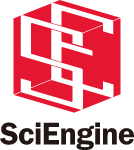Research progress of Fe-based amorphous and nano-crystalline powder cores: Soft magnetic properties and industrial application
Abstract
<p indent="0mm">The third-generation semiconductor (also known as the “wide energy gap semiconductor”, WBG) has been widely adopted and applied in strategic emerging industries. As the digital age unfolds, computing ability has become an important indicator of a country’s comprehensive national strength. The physical foundation for high computing power requires AI hardware to enable high energy density, high integration, and miniaturization. Given its key role in circuit energy conversion, the inductor must not only exhibit high energy density but also maintain excellent electrical and magnetic properties, posing significant challenges in minimizing losses during high-frequency operation. Therefore, it is imperative to develop new inductors and soft magnetic materials for high-power density and high-frequency applications. Recently, Fe-based amorphous and nano-crystalline alloys have attracted great attention in scientific research and industry because of their high saturated magnetic flux density and low core loss. Under high-frequency operating conditions, they are expected to bridge the performance gap between traditional silicon steel and soft magnetic ferrite materials in terms of high-power density and low core loss. Given their unique preparation methods, atomic structures, high strength, and hardness, it is necessary to develop specific processing and heat treatment methods tailored to amorphous and nano-crystalline alloys for industrial applications. This paper reviews the progress of Fe-based amorphous/nano-crystalline soft magnetic materials, including their development, preparation, processing, and industrial applications. The challenges and future development trends of amorphous/nano-crystalline soft magnetic powders and powder cores in potential industrial applications are discussed.</p>









